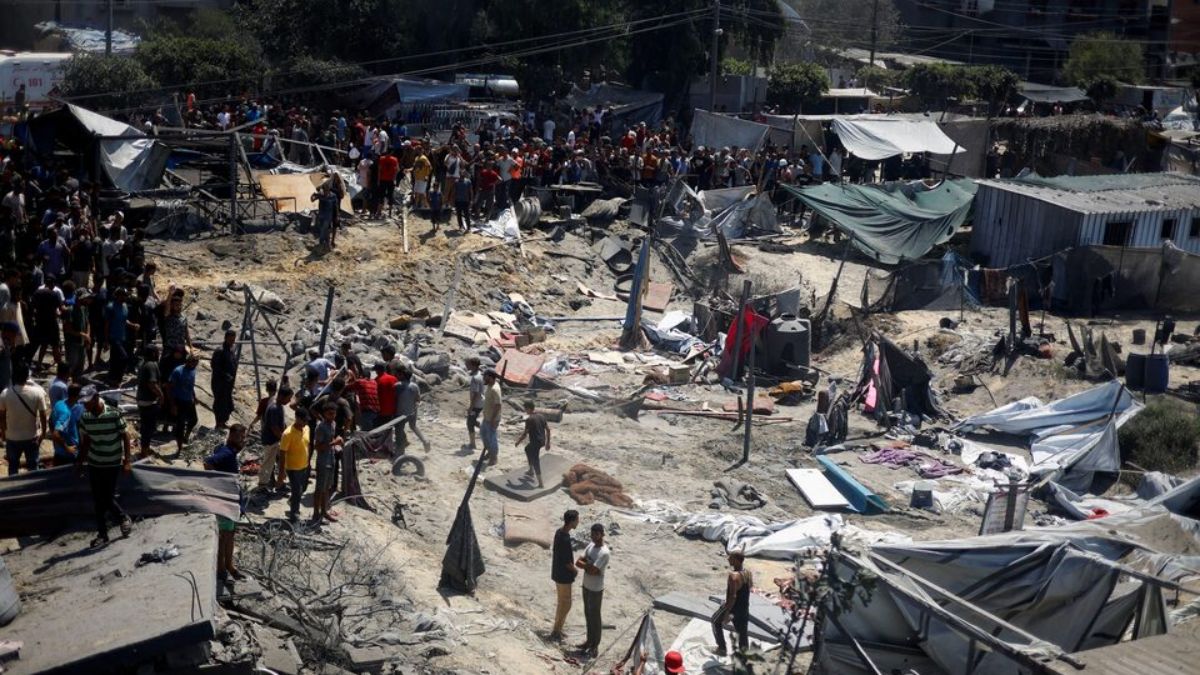The Israel-Hamas war has not only claimed lives but also decimated an economy already on life support. The conflict has crippled Gaza’s economy to the point that it is now in free fall.
The region’s Gross Domestic Product (GDP) had plunged by a staggering 81 per cent in the last quarter of 2023 (October-December 2023).
According to UNCTAD report released on Thursday (September 120, at the end of the first quarter of 2024 (January-March 2024), Gaza’s GDP had dropped over 86 per cent compared to pre-conflict levels. That means the size of Gaza’s economy, which was already reeling due to Israeli blockades, has dropped to one sixth of its pre-October 2023 value.
As a result of the conflict, as many as 201,000 jobs have been lost in Gaza alone.
The already fragile economic structure of the occupied Palestinian territory (OPT), which includes West Bank, and East Jerusalem in addition to the Gaza strip, has been hit hard, with the conflict causing catastrophic damage to businesses, infrastructure, and livelihoods.
In West Bank, the unemployment rate almost tripled in six months from October 2023 to March 2024. A total of 306,000 jobs were wiped out here, pushing West Bank’s unemployment rates from 12.9 per cent before the conflict to 32 per cent.
A long-simmering crisis
The roots of this economic collapse lie in the prolonged blockade imposed by Israel and Egypt, which began after Hamas seized control of Gaza in 2007.
The blockade has strangled Gaza’s ability to engage in trade, limiting the movement of goods and people not only via land, but also by air and sea.
Impact Shorts
More ShortsThe 16-year-long blockade had driven down living standards, eroded public services, and hampered economic growth. The situation only worsened as the frequent outbreaks of violence between Israeli forces and Hamas exacerbated instability in the region, making recovery virtually impossible.
Impact of the conflict
Since the start of the Israel-Hamas war, Gazan agricultural assets and businesses have taken a big hit.
By early 2024, between 80-96 per cent of Gaza’s agricultural assets -including irrigation systems, livestock farms, orchards, machinery, and storage facilities - had been decimated. That crippled the region’s food production capacity and worsened already high levels of food insecurity, leading to a man-made famine.
The destruction also hit the private sector hard, with 82 per cent of businesses, a key driver of Gaza’s economy, damaged or destroyed.
Airstrikes and artillery fire have crushed key infrastructure, including factories, roads, and the energy grid.
Gaza’s power supply, which was already meeting only about 50 per cent of the region’s demand, has been cut to a mere trickle, leading to frequent blackouts.
A widening poverty gap
With unemployment soaring, almost 100 per cent of Gaza has been pushed into poverty. Poverty in West Bank is also rising quickly.
The prospects for Gaza’s economic recovery remain bleak without a resolution to the underlying political conflict.
UNCTAD’s report stresses the urgent need for an end to the blockade and a lifting of restrictions on trade, which are seen as key to allowing the territory’s economy to breathe again.
Even then, the reconstruction of the economy of the OPT will take decades, with billions of dollars needed in aid and investment.


)

)
)
)
)
)
)
)
)



